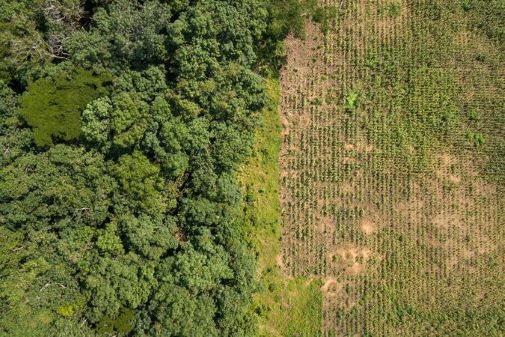Nature conservation is successful in halting and reversing biodiversity loss, according to the findings of a major new study co-authored by a University of York academic.
 Forest Management Plans have been successful in tackling deforestation (image by Axel Fassio)
Forest Management Plans have been successful in tackling deforestation (image by Axel Fassio)
The new study, published in the scientific journal Science, provides the strongest evidence to date that conservation efforts are working and that they can be effective in reducing the impacts of climate change.
Stabilising climate
Experts say the findings are crucial with more than 44,000 species at risk of extinction and billions of people around the world reliant on a thriving ecosystem.
Governments recently adopted new global targets to halt and reverse biodiversity loss, making it even more critical to understand whether conservation interventions are working, the authors of the study say.
Positive impact
Jamie Carr, co-author and researcher in climate change and biodiversity governance at the Leverhulme Centre for Anthropocene Biodiversity, University of York, said: "This work represents a huge effort on the part of many conservation professionals, all of whom are committed to reversing the loss of the world's biodiversity. It is encouraging to find that the past work of other conservationists has had a positive impact on nature, and I sincerely hope that our findings inspire those working now and in the future to ramp up their efforts."
Penny Langhammer, lead author of the study and executive vice president of campaigning organisation Re:wild, said: "If you look only at the trend of species declines, it would be easy to think that we're failing to protect biodiversity, but you would not be looking at the full picture. What we show with this paper is that conservation is, in fact, working to halt and reverse biodiversity loss.
"It is clear that conservation must be prioritized and receive significant additional resources and political support globally, while we simultaneously address the systemic drivers of biodiversity loss, such as unsustainable consumption and production."
Evaluating conservation
Although many studies look at individual conservation projects and interventions and their impact compared with no action taken, these papers have never been pulled into a single analysis to see how and whether conservation action is working overall.
The co-authors conducted the first-ever meta-analysis of 186 studies, including 665 trials, that looked at the impact of a wide range of conservation interventions globally, and over time, compared to what would have happened without those interventions. The studies covered over a century of conservation action and evaluated actions targeting different levels of biodiversity - species, ecosystems and genetic diversity.
Measuring effectiveness
The meta-analysis found that conservation actions - including the establishment and management of protected areas, the eradication and control of invasive species, the sustainable management of ecosystems, habitat loss reduction and restoration - improved the state of biodiversity or slowed its decline in the majority of cases (66%) compared with no action taken at all. And when conservation interventions work, the paper's co-authors found that they are highly effective.
The study highlighted many positive stories:
- Management of invasive and problematic native predators on two of Florida's barrier islands, Cayo Costa and North Captiva, resulted in an immediate and substantial improvement in nesting success by loggerhead turtles and least terns, especially compared with other barrier islands where no predator management was applied.
- In the Congo Basin, deforestation was 74% lower in logging concessions under a Forest Management Plan compared with concessions without a conservation plan. Concrete evidence the conservation action was successful.
- Captive breeding and release boosted the natural population of Chinook salmon in the Salmon River basin of central Idaho with minimal negative impacts on the wild population. On average, fish taken into the hatchery produced 4.7 times more adult offspring and 1.3 times more adult second generation offspring than naturally reproducing fish.
Authors of the study found a correlation between more recent conservation interventions and positive outcomes for biodiversity, suggesting that conservation is getting more effective over time.
Resourcing requirements
More than half of the world's GDP, almost $44 trillion, is moderately or highly dependent on nature. According to previous studies, a comprehensive global conservation program would require an investment of between US$178 billion and US$524 billion, focused primarily in countries with particularly high levels of biodiversity.
Researchers also argue that there must be more investment specifically in the effective management of protected areas, which remain the cornerstone for many conservation actions. Consistent with previous research, this study finds that protected areas work very well on the whole. And what other studies have shown is that when protected areas are not working, it is typically the result of a lack of effective management and adequate resourcing. Protected areas will be even more effective at reducing biodiversity loss if they are well-resourced and well-managed.
Growing together
The study's co-authors call for more and rigorous studies that look at the impact of conservation action versus inaction for a wider range of conservation interventions, such as those that look at the effectiveness of pollution control, climate change adaptation, and the sustainable use of species, and in more countries.
Prof Chris Thomas, Director of the Leverhulme Centre for Anthropocene Biodiversity in York, said: "This work really shows that taking conservation action enables ecosystems and threatened species to coexist with people. A positive, can-do approach to conservation can ensure that people and the natural world can grow together into the future."



.jpg)







